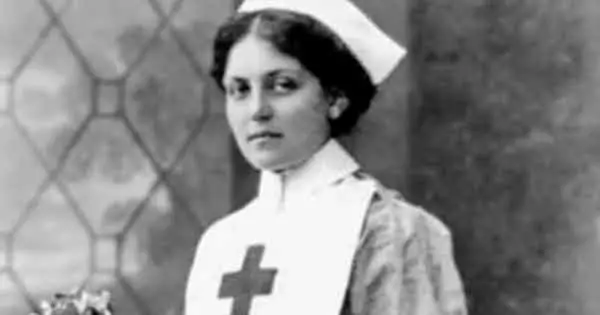This is the remarkable story of Violet Jessop, an Irish woman who was on board the Olympic, the Titanic, and the Britannic when all three ships sank, yet she lived to tell the tale.
Violet was born in Argentina to Irish parents in 1887. She overcame tuberculosis as a young child which could have been an early sign of her survival instinct.

She moved to Britain as a child with her mother after the unfortunate death of her father.
When Violet was aged just 21, her mother became ill and the responsibility for taking care of her family fell on her.
She decided to follow in her mother’s footsteps and become a ship stewardess. However, most women working in the industry at the time were middle-aged. There was a wariness in hiring young women such as it was believed they could prove to be a distraction to crew members and passengers on long-haul trips.
Violet managed to get herself a job by wearing frumpy clothes and no make-up. She joined the White Star Line in 1908.
Violet earned £2.10 per month, and despite the long trips back and forth across the Atlantic and occasional rough weather conditions, she enjoyed the work and felt the American passengers treated her with kindness and respect as she served them.
After a year with White Star Line, Violet suffered her first close encounter at sea.
Her ship, the Olympic, collided with the HMS Hawke, a ship designed to sink enemy ships by ramming them.
Both vessels were severely damaged, but thankfully the Olympic managed to limp back to shore before it sank. Violet stepped off the ship unharmed.
A couple of years later, Violet was placed on board the ‘unsinkable’ Titanic.
As we all know, it collided with an iceberg and sank in the Atlantic Ocean, taking more than 1500 lives with it.
Violet was one of the lucky ones, as she was ordered to board lifeboat number 16, as an example to the passengers to show it was safe.
In her memoirs she recalled: “I was ordered up on deck. Calmly, passengers strolled about. I stood at the bulkhead with the other stewardesses, watching the women cling to their husbands before being put into the boats with their children. Sometime after, a ship’s officer ordered us into the boat first to show some women it was safe.”
While on board lifeboat number 16, a baby was thrust into Violet’s arms, and she cradled it until they were rescued by the Carpathia. The poor baby’s distraught mother found Violet holding her child, and gratefully took it back. The identity of the baby has never been confirmed, and Violet didn’t even know if it was a boy or a girl.
Despite the near-death experience, Violet was back on board the Titanic’s sister ship the Britannic in the lead-up to World War One.
She took a job as a nurse onboard an operation in the Aegean Sea. The ship hit a mine that had been planted by a German U-boat, and quickly started sinking. This time there were no lifeboats available.
This is Violet’s recollection of the moments that followed: “I leapt into the water but was sucked under the ship’s keel which struck my head. I escaped, but years later when I went to my doctor because of a lot of headaches, he discovered I had once sustained a fracture of the skull!”
Thankfully, Violet again survived the disaster. She was not deterred by her experiences and remained working on board ships for much of her life, before retiring at the age of 61.